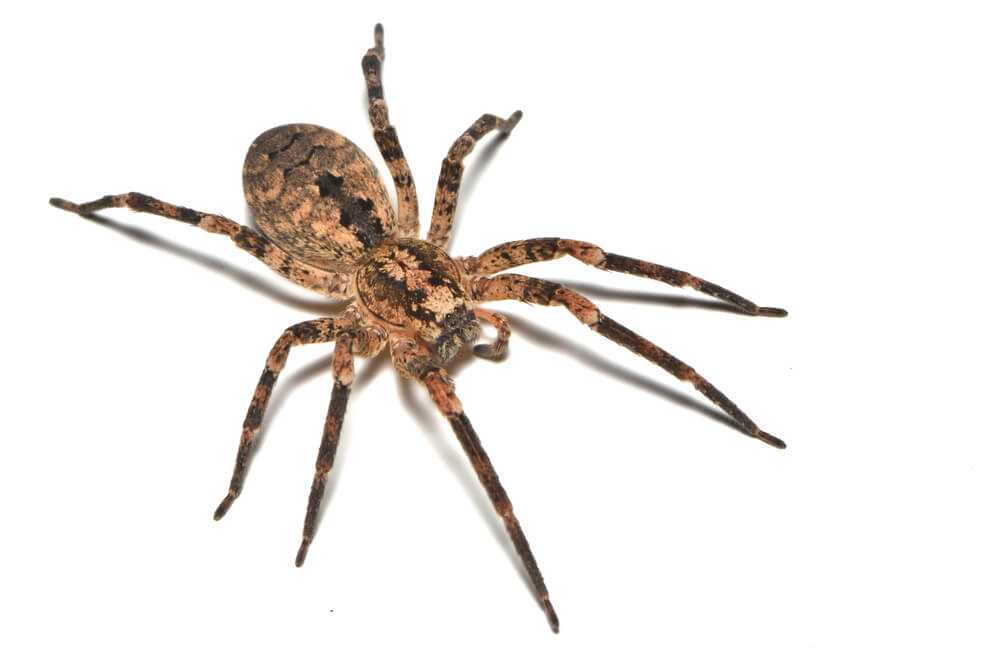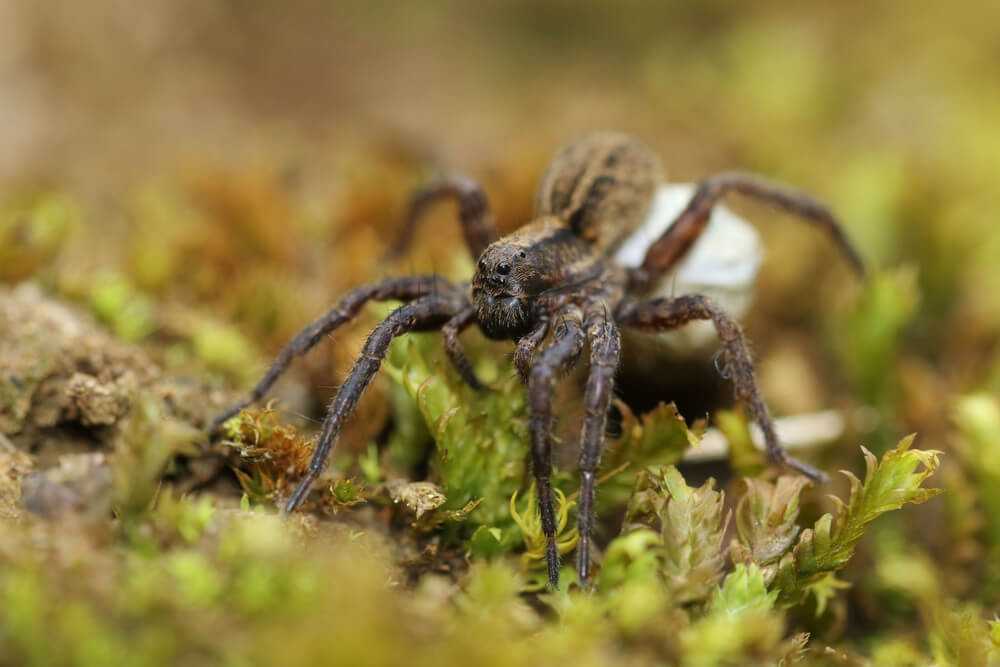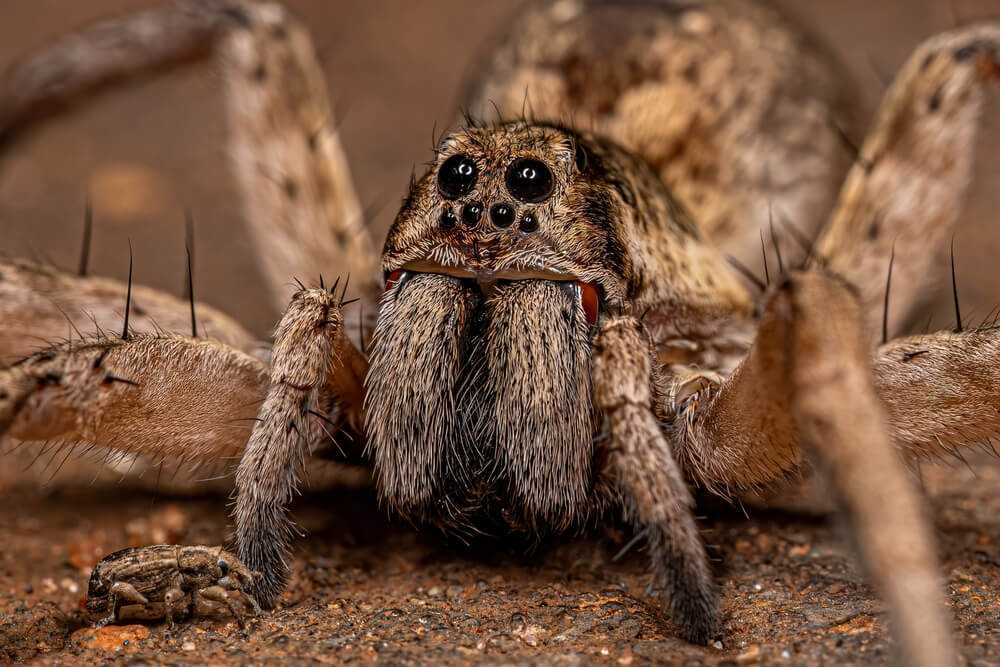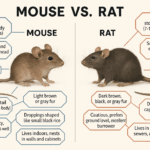Wolf Spiders: What to Know
Wolf spiders are fast, ground-hunting spiders found worldwide. They don’t weave webs to catch prey; they chase it down. Despite their fierce appearance, they are not harmful to humans. This guide covers their unique behaviors, habitats, and key characteristics.
Key Takeaways
- Wolf spiders are agile, solitary arachnids that rely on hunting techniques rather than web construction to catch their prey.
- These spiders are found globally, thriving in various outdoor habitats, and play essential roles in pest control and as prey in ecosystems.
- Wolf spider bites are generally harmless, causing mild reactions, and many common myths about their danger are unfounded.
What Are Wolf Spiders?
Wolf spiders are hairy arachnids known for their impressive agility and size, with some species growing as large as a human hand. Named after wolves due to their lone hunting style, these spiders don’t rely on webs to catch their prey. Instead, they stalk and chase down their targets, exhibiting behaviors akin to their mammalian namesakes.
Living solitary lives, wolf spiders live as adept hunters. They create burrows for shelter and adapt to various environments, showcasing their versatility and survival skills. These arachnids are often found prowling at night, using their keen eyesight and swift movements to capture unsuspecting prey.
While most spiders spin webs to catch their food, wolf spiders stand out with their unique hunting methods, making them a fascinating subject of study. Their solitary nature and impressive hunting abilities earn them a special place in the world of arachnids.
Habitat and Distribution of Wolf Spiders

Wolf spiders boast a wide global distribution, found on every continent except Antarctica. This extensive reach is largely due to their ability to disperse aerially as spiderlings, allowing them to colonize a variety of environments. From coastal forests to suburban gardens, alpine meadows to woodlands, these spiders are versatile in their habitat preferences.
Despite their wide distribution, wolf spiders are primarily outdoor creatures. They are often found in leaves, grass, and burrows, preferring the great outdoors over indoor settings. While some species may favor specific habitats, many are wandering types without fixed homes, constantly on the move in search of prey.
Interestingly, wolf spiders can thrive in both natural and urban environments. Whether it’s the moist leaf litter of a forest or the manicured lawns of suburban gardens, these spiders adapt remarkably well, showcasing their resilience and adaptability.
Physical Appearance of Wolf Spiders

Identifying a wolf spider becomes straightforward with some observation. Typically, they exhibit a dark brown hue, though some may appear in gray or tan shades, helping them blend into their surroundings. These colors often come with stripes or markings, enhancing their camouflage.
Wolf spiders vary in size, with body lengths ranging from 0.6 cm to over 3 cm. The largest species in the U.S. can measure up to 2 inches (5 centimeters) long. Their robust bodies and long, stout legs not only contribute to their formidable appearance but also aid in their hunting prowess.
A distinctive feature of wolf spiders is their eye arrangement. They have eight eyes arranged in three rows: two large central eyes, two medium-sized eyes on the sides, and four small eyes below. This unique configuration provides them with excellent eyesight, crucial for their nocturnal hunting activities.
Hunting Techniques of Wolf Spiders
When it comes to hunting, wolf spiders are masters of stealth and speed. Unlike most spiders, they do not construct webs to trap their prey. Instead, they rely on their excellent eyesight and agility to track and pursue their targets on the ground, primarily at night. Their eight eyes provide them with a significant advantage in low-light conditions, enabling them to spot and stalk their prey effectively.
Wolf spiders employ a combination of stalking and ambush tactics. They often wait for the perfect moment to pounce, using their powerful legs to jump on the prey and restrain it before delivering a venomous bite. This method sets them apart from other spiders that rely on spinning webs to capture their food. Wolf spider preys often fall victim to this effective hunting strategy.
Their hunting strategy is a blend of patience and precision. Stalking their prey like wolves and launching sudden attacks, they exhibit a fascinating and efficient hunting prowess. This unique approach to hunting highlights their role as formidable predators in their ecosystems.
Wolf Spider Reproduction

Wolf spider reproduction is a fascinating process that involves unique behaviors not commonly seen in other spider species. Female wolf spiders carry their distinctive way of carrying their eggs. They create a secure silk sac to house about 100 eggs, which they then attach to their spinnerets. This method of carrying the egg sac ensures the safety and mobility of the eggs.
Once the spiderlings hatch, they cling to the female’s body and legs for protection during their early stages of life. This behavior provides the spiderlings with a level of care and security rarely observed in other spider species, highlighting the maternal instincts of female wolf spiders.
The reproductive process and early life stages of wolf spiders demonstrate their adaptability and survival skills. By carrying their young and providing initial protection, female wolf spiders ensure the continuation of their lineage in a variety of environments.
Wolf Spider Bites: Symptoms and Treatment
Wolf spider bites, though often feared, are generally not dangerous to humans. These spiders typically bite only when they feel threatened or trapped, preferring to flee rather than engage in confrontation. The symptoms of a wolf spider bite can include pain, redness, and swelling, but they usually do not require medical attention.
Most wolf spider bites result in mild reactions, and allergic responses are rare. However, if symptoms persist or a severe reaction occurs, it is advisable to seek medical attention. Common myths exaggerate the dangers of wolf spider bites, but in reality, they pose no significant threat to humans.
Recognizing the true nature of wolf spider bites helps dispel unnecessary fears. While it’s important to respect these creatures and avoid provoking them, knowing that their bites are generally harmless can ease the apprehension many people feel towards these misunderstood arachnids.
Differentiating Wolf Spiders from Other Spiders
Distinguishing wolf spiders from other spiders can be challenging, especially when large, hairy spiders are found indoors. Many people mistake male house spiders of the genus Tegenaria for wolf spiders due to their similar appearance. However, wolf spiders are primarily outdoor creatures and are less likely to be found in homes.
Confusion often arises with more dangerous spiders like the brown recluse or black widow. Severe reactions to spider bites could indicate an encounter with these more venomous species rather than a wolf spider. Recognizing these differences is crucial for proper identification and understanding.
Wolf spiders’ unique behaviors and physical traits, such as their eye arrangement and hunting methods, set them apart from other spiders. By learning these distinguishing features, one can accurately identify wolf spiders and appreciate their role in the environment.
The Role of Wolf Spiders in Ecosystems

Wolf spiders play a vital role in maintaining the balance of ecosystems. As ground-dwelling predators, they primarily hunt insects, other spiders, and occasionally small amphibians and reptiles, including ground dwelling insects. This predatory behavior helps control pest populations in agricultural settings and gardens, making them a natural form of pest control.
In addition to their role as predators, wolf spiders also serve as prey for various animals, including birds and small mammals. Their presence in the food chain contributes to the biodiversity and health of ecosystems, highlighting their ecological significance.
By controlling pest populations and serving as a food source for other animals, wolf spiders enhance the resilience and stability of their habitats. Their ecological contributions underscore the importance of preserving these fascinating arachnids.
Common Wolf Spider Species
Among the many species of wolf spiders, a few stand out due to their size and distinctive characteristics. The Carolina wolf spider (Hogna carolinensis) is the largest species in the U.S., with a body length exceeding 2.5 cm. Known for its impressive size, this species is a prominent example of the diversity within the wolf spider family.
Another notable species is the rabid wolf spider (Rabidosa rabida), recognized for its unique appearance and widespread presence across North America. These common wolf spider species exemplify the variety and adaptability of wolf spiders in different environments.
Wolf Spider Myths and Facts
Wolf spiders are often the subject of myths and misconceptions. One prevalent myth is that wolf spiders are responsible for various mysterious skin ailments, but most skin issues have different, unrelated causes. Another common misconception is that wolf spiders can hatch eggs under human skin, a legend that is entirely unfounded and not based on spider behavior.
In reality, most true wolf spider species are relatively small, with body lengths generally around 1 centimeter or less. Dispelling these myths and understanding the true nature of wolf spiders helps foster a more accurate and appreciative view of these fascinating creatures.
Wolf spiders are remarkable arachnids that captivate with their unique hunting techniques, diverse habitats, and significant roles in ecosystems. From their solitary hunting style to their maternal care of spiderlings, wolf spiders demonstrate a fascinating blend of behaviors and adaptations.
By understanding and appreciating the true nature of wolf spiders, we can dispel common myths and recognize their ecological importance. These spiders, often misunderstood, play a crucial role in maintaining the balance of nature, making them worthy of respect and protection.
Frequently Asked Questions
Wolf spider bites are typically not dangerous to humans, usually causing only mild symptoms such as pain, redness, and swelling. Severe reactions are rare, making them mostly harmless.
You can identify a wolf spider by its dark brown or gray coloration, robust body, long legs, and distinctive arrangement of eight eyes organized in three rows. Look for these features to confirm its identity.
Wolf spiders live in a variety of habitats worldwide, including coastal forests, woodlands, alpine meadows, and suburban gardens. Their adaptability to different environments contributes to their widespread presence.
Wolf spiders do not spin webs; instead, they actively hunt and pounce on their prey. This unique behavior distinguishes them from many other spider species.
Wolf spiders play a crucial role in ecosystems by controlling pest populations through their predation of ground-dwelling insects and other spiders, while simultaneously serving as a food source for birds and small mammals. This balance contributes significantly to the biodiversity and health of their environments.
"*" indicates required fields
"*" indicates required fields




